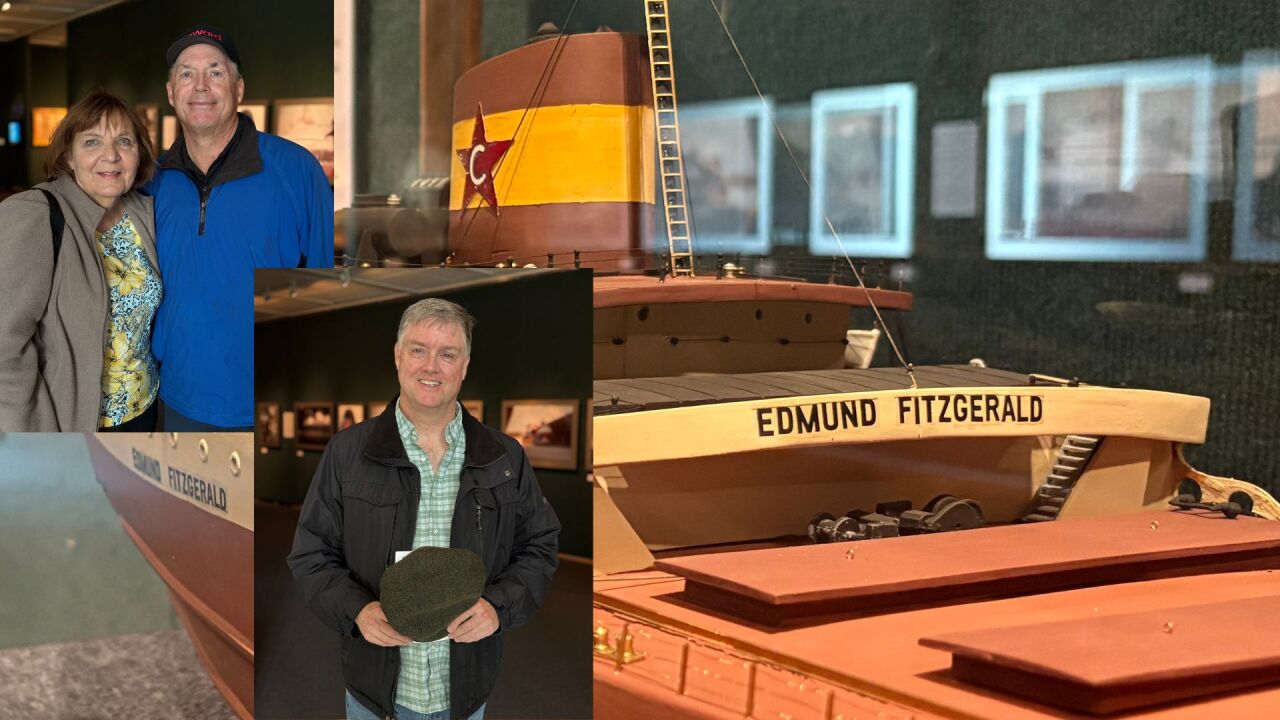MILWAUKEE, Wis. — Visitors from across the country went to the Grohmann Museum to honor the 50th anniversary of the SS Edmund Fitzgerald’s tragic sinking in Lake Superior, which claimed all 29 crew members on Nov. 10, 1975.
Watch: Remembering the 'Big Fitz': 50 years after the Edmund Fitzgerald’s final voyage
The Grohmann Museum’s exhibit, “The Legend Lives On 50 Years Later,” has drawn people like Patrick Fitch and Betsy and Gary Van Sickle from Pennsylvania, all captivated by the story of the legendary freight ship known as the Big Fitz.
“I think there’s just an allure and an interest in those types of stories. There were souls that were lost and families that feel that today,” Fitch said.

For many visitors, their fascination with the Edmund Fitzgerald began with Gordon Lightfoot’s famous ballad about the tragedy.
“It was the song by Gordon Lightfoot in the story of the Edmund Fitzgerald, which captivated me from the outset,” Fitch said.
When asked about the song, Betsy Van Sickle recited the opening lines: “The legend lives on from the Chippewa on down to the big lake they call Gitche Gumee.”

The Fitzgerald’s story holds special significance in Milwaukee, as the ship was named for Edmund Fitzgerald, former president of Northwestern Mutual, which owned the vessel.
“When the gales of November come early, you better watch out,” Gary Van Sickle said, referencing another line from the famous song.
After 17 years of trips on the Great Lakes, the Fitzgerald was lost during a fierce storm on Lake Superior in 1975.
Tim Wagner, a UW–Madison research scientist, explained the devastating conditions that night.
“The wind is just blowing along, and it is just pushing up a giant wall of water as it blows. And so it’s creating these tremendous waves that are the size of small buildings. The Fitzgerald was just in the worst spot and got hit with the worst waves, and unfortunately ended in tragedy,” Wagner said.
Wagner, a meteorologist, has been working with a team that’s digging deeper into this event. They have been using old satellite data recorded on the day of the sinking and reanalyzing that data with new technology.
“The things that we’ve been seeing are reinforcing what we thought — that this was just a very intense storm, but the winds across Lake Superior that day were extraordinarily fast,” Wagner said.
Wagner noted that researchers may never know exactly how the ship sank.
For visitors like Fitch, the exhibit serves as an important reminder of the dangers faced by those who work on the water.
“You know, a livelihood on the ocean or the Great Lakes is a dangerous profession, and the Edmund Fitzgerald certainly pays testament to that, or pays tribute to that. So we mustn’t forget that,” Fitch said.
The exhibit remains open through Dec. 1.
It’s about time to watch on your time. Stream local news and weather 24/7 by searching for “TMJ4” on your device.
Available for download on Roku, Apple TV, Amazon Fire TV, and more.





